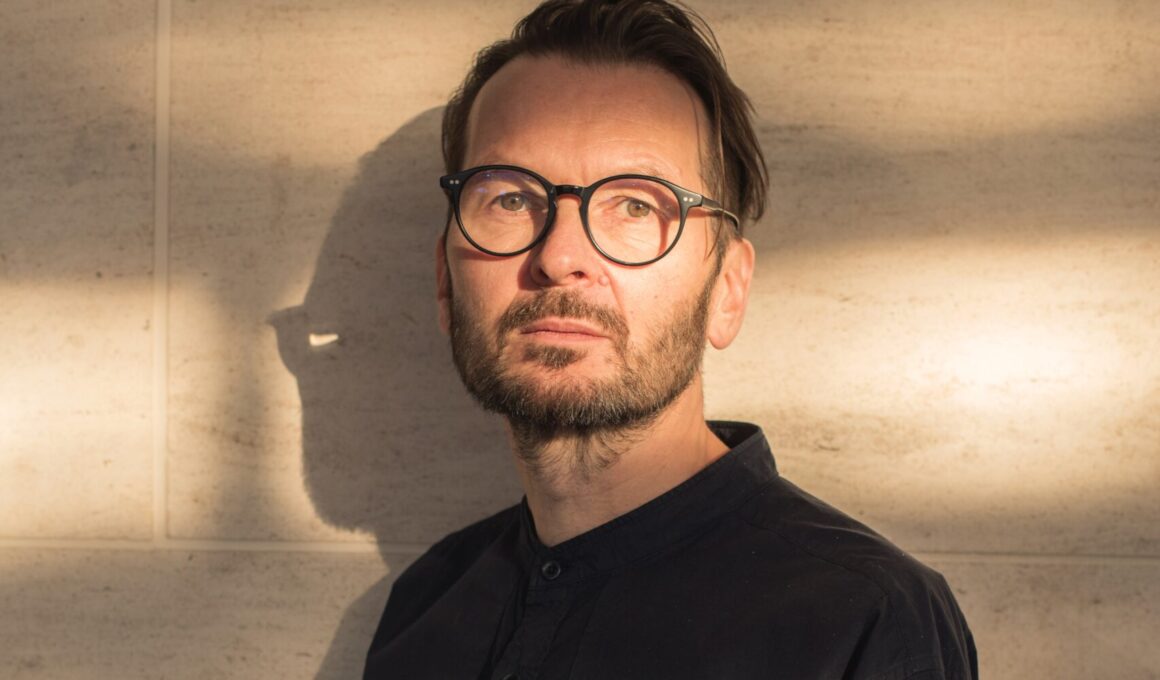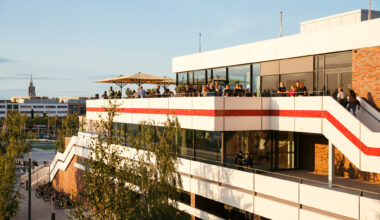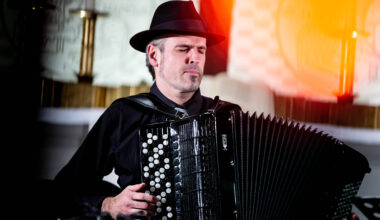Robert Lippok has been testing art’s outermost edges for over four decades. His background at the costume department of the German State Opera in Berlin, the studies at the School of Art and Design Berlin-Weissensee, and the pioneering band projects Ornament und Verbrechen (1983) and To Rococo Rot (1995 – 2014) informed a transversal practice spanning from music composition, visual art, stage design, performance and costume design.
Experimenting with a wide range of music technologies, found objects and self-built instruments, Lippok’s pieces – whether an album or an interactive installation – have always transcended mere self-expression to address the role of art as a space-carving and architectural practice. Through the years, his works have been exhibited in the Palais de Tokyo, Neue Nationalgalerie, Hamburger Bahnhof, Künstlerhaus Bethanien, Haus der Kunst in Munich, Gropius Bau, and the 60th Venice Biennale amongst others.
Lippok’s ever-present interest in collaborative and interdisciplinary projects catalysed joint ventures with international artists including Doug Aitken, pianist Ludovico Einaudi for an extensive tour, choreographer Constanza Macras , opera director Sebastian Baumgarten, and multimedia artist Julian Charrière.
Known for his long-standing contribution to raster-noton’s catalogue through timeless avant-techno releases, notably “open close open” (2001), “redsuperstructure” (2011), “Applied Autonomy” (2018).
At this year’s first MINSKBAR at “DAS MINSK” in Potsdam, Robert Lippok and Argentinian digital artist and industrial designer Lucas Gutierrez will play a three-hour DJ set.
FACTS
1. Robert Lippok loves Claudio Monteverdi.
2. and crunchy Peanutbutter
3. Hates capitalism
1. What is the biggest inspiration for your music?
Really everything around me, light, darkness, all kinds of sounds, books, films, conversations, sleep and, of course, music by other artists. My membranes are very permeable, I hear a song on the radio and immediately have to recreate the sound of the bass or see an old broom standing in the corner and have an idea for a room installation.
Over the years, I have developed strategies to filter all these impressions and incorporate them into my own artistic practice.
2. How and when did you get into making music?
It must have been around 1980, I was a teenager and listened to a lot of electronic, experimental and non-European music. Many of the musicians I admired were not trained musicians, which gave me courage. It was only a small step from music consumer to music producer.
3. What are 5 of your favourite albums of all time?
Omg, what a question.
Fennesz, Plays
Sophie, Oil Of Every Pearl’s Un-Insides
Rhythm & Sound, Never tell you feat. Paul St.Hilaire
The Cure, Pornography
Nikolaus Harnoncourt, Ensemble für alte Musik, Concentus Musicus
4. What do you associate with Berlin?
Omg, what a question.
Berlin changed so much in the last 50 years, I never felt to move somewhere else. Good people with a rough dry humor, so much great independend venues to listen to music , total freedom, the power of greed and money = AmTacheles, the power of the people = Tempelhofes Feld.
5. What’s your favourite place in your town?
Tempelhofes Feld or Ackerstrasse sitting on the community benches drinking a glas of wine. Watching the street live.
6. If there was no music in the world, what would you do instead?
Eat bread with fresh Tomatoes and fine cut onions. Watch clouds appear and disappear, read, walk, produce pottery with a very fine Raku glaze.
7. What was the last record/music you bought or listen?
Horacio Vaggione, Schall / Rechant, Recollection GRM, 2024
8. Who would you most like to collaborate with?
Kiki Smith
9. What was your best gig (as performer or spectator)?
performer: one of my best gigs was at Berghain at one of the raster-noton label nights, I think it was in 2016.
spectator: A concert by Christian Fennesz min Glasgow, it must have been around 2005.
10. How important is technology to your creative process?
Technology is everything, but having used electronic instruments for over 40 years, it feels very natural to work with these tools.
Please tell us a little bit about your work at this year’s Biennale di Venezia 2024?
The invitation to the Biennale gave me the opportunity to develop a long installation that extends over an area of about 5000 square metres. The actual sound field is much larger. I was interested in breaking down the boundaries of perception by combining my composition with the environmental sounds of the island. I did this with the help of low-frequency loudspeakers that I embedded in the ground. The frequencies mask the sounds of the numerous boats traveling in the lagoon and irritate the perception of space and distance.
One of curator Chagla Ilk’s great strengths is not to present works of art in spatial and sonic isolation, but to interweave them. It was a very exciting process to develop this concept with the other artists, Michael Akstaller, Nicole L’Huillier and Jan St. Werner and the whole team.


